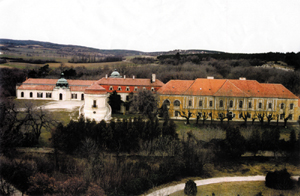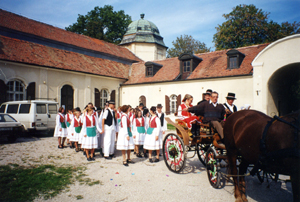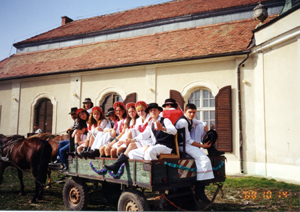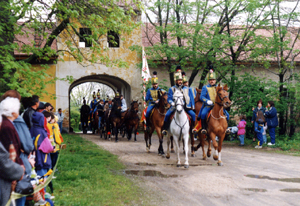Popular destinations nearby
Székesfehérvár,
Tata,
Tatabánya,
Bakonybél,
Dunaújváros,
Eplény,
Gárdony,
Komárom,
Pápa,
Várpalota,
Velence,
Zirc,
Ajka,
Alcsútdoboz,
Ászár
|
The village is located next to Székesfehérvár, at the foot of Iszka hill belonging to the Bakony. It has 1,880 inhabitants. It has been inhabited for ages ad was first mentioned in documents in 1193. There were three villages on its area in the Middle Ages: Iszka, Szentgyörgy and Atya. It has had its present name since 1590. A legend is attached to the name Szentgyörgy: knight Saint George defeated the dragon which terrorized the region at the road to Fehérvár. The village is rich in historic relics. Besides agriculture and forestry, handicraft also flourished. The reputation of the wines produced here was equal to the ones of Mór. Its bath was famous during the two world wars. Today it is visited mainly because of the Amadé-Bajzáth-Pappenheim mansion, which was first mentioned in documents in 1735. The visit to the mansion is a journey in the history of art, as it has characteristics of all styles from the Baroque Age to the neo-Baroque of the 20th century. The events of the village - the St. George Days in April, the Late Summer Merry-making around the national holiday on 20th August and the Vintage procession at the end of September, beginning of October - are organized in the park of the mansion. Other sights of the village are the Calvinist and Roman Catholic churches. The column of St. George chapel, which was restored in its original form in 2004, can be found by the road running out from Székesfehérvár. Iszkaszentgyörgy is proud of its famous son, Márton István Mándi, who was the Rector of the Calvinist college in Pápa. Pictures of Iszkaszentgyörgy
|
Iszkaszentgyörgy map nagyítása >>
|
|
|
Hungary - Iszkaszentgyörgy |
|
|
|
||
|
Sunday, 6. July 2025. - 02:29:40 |
||



